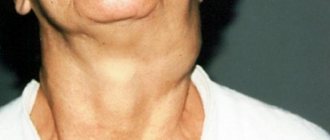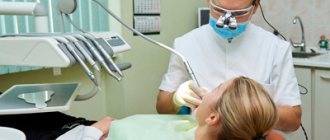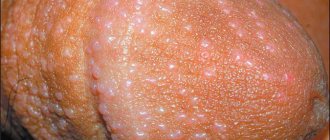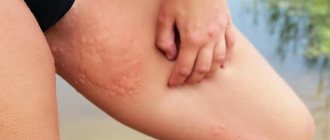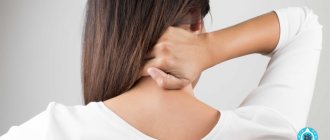Last update: 03/03/2021
The neck is one of the most sensitive areas of our body; the skin in this area is extremely susceptible to external influences, including those of an allergic nature. The appearance of allergies in the neck can cause unpleasant physical sensations and interfere with putting on clothes or taking a shower; In addition, psychological inconveniences associated with the manifestations of allergic reactions on open areas of the skin cannot be ruled out. This is why it is so important to know about the causes, symptoms and treatments for this disease.
Causes of neck allergies
Neck allergies can be caused by local exposure, or may be part of a systemic reaction to a particular allergen. Among the local causes that most often cause allergy symptoms on the skin of the neck are:
- Prolonged exposure to sweat (heat rash);
- Exposure to metal objects. Chains, necklaces, clasps and other items made of simple or precious metals may cause allergies when in prolonged contact with the skin;
- Cosmetics;
- External medications;
- Ultraviolet (usually in combination with other factors, for example chemicals).
In addition, neck allergies may be part of a systemic response to food allergens (fish, citrus fruits, berries, etc.), environmental factors (dust, pollen, microorganisms, wool), etc.
External factors
The cause of the disease may be a violation of human food hygiene rules or a negative impact on the environment. Therefore, before going to a specialist, you need to analyze your actions over the past few days, as well as study the hygiene products that are used for hair care. This must be done because the most common reasons why the back of the head and head often itch are the following:
- An allergic reaction that occurs when using certain hair care products.
- Intolerance to hair dyes containing hydrogen peroxide or ammonia.
Constant scratching at the back of the head can also be caused by constantly blow-drying your hair with a hot hair dryer, washing your hair frequently, or staying in direct sunlight for long periods of time without covering your head. These factors lead to dryness of the epidermis of the scalp and, as a result, to the appearance of a rash.
The occurrence of this aesthetic pathology is greatly influenced by psycho-emotional overload or frequent stress. Due to their effect on the body, increased production of adrenaline begins, an increased amount of which causes skin itching.
Also, among the circumstances that can provoke unpleasant sensations, experts note excessive mental or prolonged stress.focus. This is due to the fact that such conditions cause emotional fluctuations in a person, contributing to the emergence of negative skin sensations.
Allergy treatment
The basic principle of treating any allergic reaction is to eliminate the causes that caused it. In addition, patients are often prescribed a special elimination diet to protect themselves from food allergens. In the treatment of allergies, anti-allergic and anti-inflammatory drugs of local and systemic action are also used.
Of great importance in the treatment of allergic reactions is the elimination of the most unpleasant symptoms: redness, burning, itching. La-Cri products, compatible with modern anti-allergy drugs, can help with this:
- La-Cri cream reduces burning and itching, helps reduce erythema (redness);
- Emulsion "La-Cri"
allows you to make the skin less sensitive, get rid of flaking and dryness; - Cleansing gel "La-Cri"
allows you to cleanse the skin of irritants and allergens.
When the causes of itching are ENT diseases
The most common causes of severe itching in the throat are associated with diseases of the ENT organs:
- sinusitis;
- tonsillitis;
- pharyngitis;
- fungal infection of the pharynx (mycosis).
In each of the above diseases, itching inside the throat is a consequence of exposure to foreign agents on the human mucous membranes.
In case of sinusitis, tonsillitis and pharyngitis, such agents are pathogenic microorganisms that penetrate the larynx, pharynx or nose from the outside. The causes of fungal infection, respectively, are pathogenic fungi.
Bacteria and fungi often inhabit human mucous membranes, but for them to become more active and trigger the inflammatory process, it is enough for favorable conditions to arise for their reproduction. Such “favorable” factors are decreased immunity, hypothermia, stress, and the presence of chronic diseases. Also, a common cause of the development of diseases of the ENT organs is infection of one person from another by airborne droplets or contact-household methods.
Tonsillitis is caused primarily by streptococci. Pathogenic microorganisms settle in the palatine tonsils, causing severe inflammation in them. At the same time, the throat not only hurts greatly, but also itches and itches.
With pharyngitis, the inflammatory process covers the mucous membrane of the pharynx. In this case, the patient complains not only of an itchy throat, but also of a strong dry cough and a feeling of a lump in the throat.
Sinusitis is an inflammation of the maxillary sinuses. A feeling of severe itching in the throat occurs when mucous masses flow from the nasal cavity along the back wall of the pharynx and irritate its mucous membrane.
The main sign of mycosis (fungal infection) is a white coating on the surface of the mucous membrane of the oropharynx. Inflammation is caused mainly by fungi of the genus Candida. Mycosis can be provoked by a sharp decrease in immunity, frequent diseases of the pharynx, diabetes mellitus, and taking antibacterial and hormonal drugs.
The variety of diseases of the ENT organs that cause a feeling of severe itching is quite understandable: all ENT organs are interconnected with each other, and an infection from the nose, for example, easily spreads to the pharynx or ear.
Therefore, it is necessary to treat an ear, nose or throat disease in a timely manner to prevent the development of complications.
Experts' opinion
The conducted clinical study proves the high efficiency, safety and tolerability of products for daily skin care of children and adults with mild and moderate forms of atopic dermatitis and during remission, accompanied by a decrease in the quality of life of patients. As a result of therapy, a decrease in the activity of the inflammatory process, a decrease in dryness, itching and flaking was noted.
Based on the results of joint research, the following information is placed on product packaging: “Recommended by the St. Petersburg branch of the Union of Pediatricians of Russia.”
Sources:
- Yukhtina N.V., Modern ideas about atopic dermatitis in children
- Kamasheva G.R., Khakimova R.F. Valiullina S.A., Methods for assessing the severity of atopic dermatitis in young children, Dermatology journal, 2010
- G.V. Molokova, E.V. Bukina, Diaper dermatitis in children with sensitive skin, Journal of Dermatology and Allergology, 2019
- N.L. Rybkina, Modern approaches to newborn skin care: pediatrician tactics, journal Bulletin of Modern Clinical Medicine, 2014
Symptoms
The situation with an aesthetic disease that affects the neck and back of the head, hiding under the hairline, is dangerous because it does not bother you at first. and does not incline a person to run to the doctor. However, the lack of adequate therapy in this case can lead to a rapid worsening of the problem.
Women and children are more often susceptible to this disease. This factor is due to the fact that women have a large number of allergens in their everyday life (shampoos, conditioners, masks and hair dyes), and the children's body is more susceptible to external irritating factors. The development of their aesthetic problem can be recognized by the appearance of characteristic rashes and redness, as well as the following negative signs:
- The skin begins to peel off intensively, and particles of crushed epidermis cover clothing;
- A rough coating appears on the skin, crusts and blisters may form;
- There is a constant itching sensation that cannot be relieved by scratching the skin.
In some cases, this negative phenomenon may be accompanied by an increase in body temperature, increased lacrimation and swelling. Over time, the itching will spread more and more, covering surrounding areas.
Methods for diagnosing the disease
Scraping from the skin allows you to determine the causative agent - a fungus or bacteria.
You need to start the examination with a dermatologist, therapist or infectious disease specialist. Sometimes the diagnosis is carried out by an immunologist or oncologist. The following research methods are prescribed:
- taking tests: blood, urine, including hormones and biochemistry;
- scraping the area of redness to identify bacteria, viruses and fungi;
- Ultrasound of internal organs.
If the ultrasound shows any abnormalities, additional diagnostic methods will be prescribed.
Consulting a specialist is not enough. Instrumental studies and laboratory tests are the only way to make a correct diagnosis. Without them, it is extremely difficult to distinguish one form of the disease from another. If this is not done, you cannot count on effective treatment.
What to do if the back of your neck itches
If the skin on the back itches due to sunburn, then Bepanten, Panthenol, Psilo-balm ointment will help. When bubbles form, use Olazol aerosol or Rescue balm.
Allergy to metal
If you are allergic to metal jewelry, be sure to remove it and not wear it again. Places of irritation are lubricated with a thin layer of Prednisolone or Hydrocortisone ointment for up to 5 days, then the residual effects are removed with Aloe liniment or Calendula ointment, Flotseta gel.
Psoriasis
The treatment regimen for psoriasis includes:
- sufficient duration of sleep and daytime rest;
- natural soothing: Persen, Phytosedan, peony tincture;
- hypoallergenic diet;
- antihistamines: Tavegil, Claritin;
- diuretics: Diacarb;
- ointments with hormones: Betamethasone, Lokoid;
- local antipruritics: Daivonex, Eplan, Protopic;
- absorbable external preparations: Ichthyol ointment, with birch tar (Berestin solution).
Osteochondrosis
At the initial stage of cervical osteochondrosis, massage and rubbing of ointments with a warming effect (Finalgon, Viprosal, Nicoflex) are indicated. Acupuncture, amplipulse, ultrasound, darsonvalization help well. Therapeutic gymnastics must be prescribed.
Seborrheic dermatitis
For the treatment of seborrheic dermatitis it is recommended:
- hypoallergenic diet;
- antifungal drugs: Miconazole, Nizoral;
- antipruritic combined ointments: Pimafukort, Candiderm.
Physiotherapy procedures include:
- cryomassage;
- high-frequency currents according to Darsonval;
- ultrasound and phonophoresis Hydrocortisone.
The neck itches due to allergies, burns, psoriasis, eczema, dermatitis, and can also be caused by a disease of the thyroid gland or cervical spine. Persistent itching is typical for scabies and demodicosis. Scratching can be complicated by infection.
Therapy methods
Basic treatment tactics are based on the use of medications. To eliminate itching in the neck and décolleté, you need to address its cause.
Use of drugs
A combination of medications is often prescribed:
- glucocorticosteroids and hormonal ointments - suppress the activity of pathogens in dermatological problems;
- immune stimulants – indicated for general weakening of the body;
- antiallergic drugs - prescribed if itching has caused a reaction to food, chemicals or other irritants;
- antiparasitic drugs – used when it is necessary to destroy parasites in the body;
- antibiotics - widely used to detect infections, viruses and foreign flora, as well as to prevent their occurrence.
For systemic diseases and organ disorders, for example, thyroid pathologies, additional medications are used. They are aimed at restoring the natural function of a particular organ.
Physiotherapeutic procedures
The use of therapeutic mud strengthens the protective functions of the skin.
Physiotherapy has an excellent effect when combating itching on the neck. The procedures eliminate inflammation, pain and other negative reactions, and also help fight the cause:
- different types of electrical stimulation;
- heat treatment - laser, UHF, infrared therapy;
- use of mud;
- sea water baths, radon baths and others;
- paraffin applications.
Experimental methods are also used, including within the framework of sanatorium treatment.
Traditional methods of treatment
When itching of the skin, you need to be careful when choosing non-traditional methods of treatment. They can exacerbate an allergic reaction and cause negative effects on irritated skin. However, doctor-approved prescriptions can help relieve acute symptoms.
Therapy with herbs and other natural products takes time. The effect of therapy with traditional recipes is noticeable only 1-6 months after the start of treatment.
Compresses, lotions and lotions made from herbal infusions are widely used. Baths with decoctions are used, as well as tinctures for oral use. The selected products should have low allergenicity and anti-inflammatory properties: chamomile, string, oregano, mumiyo.
